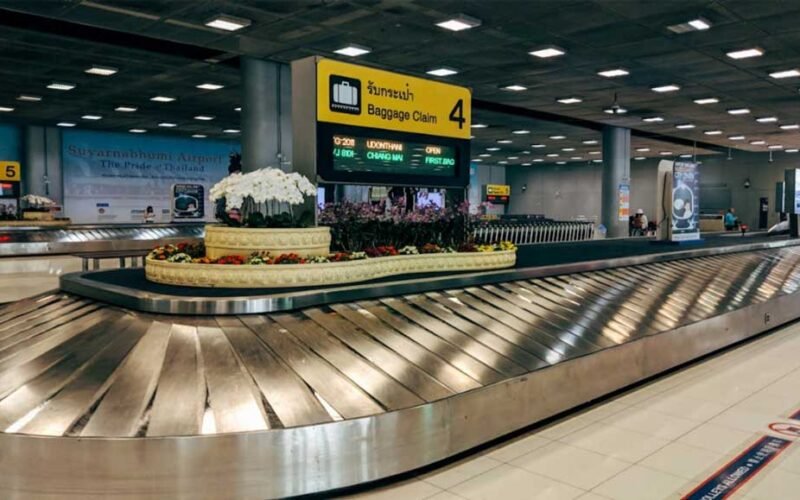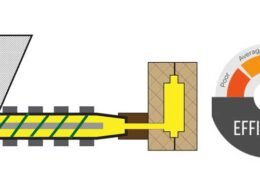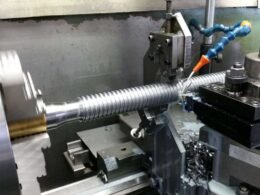It’s probably safe to assume that at some point, you’ve encountered a belt conveyor in its full glory—gliding packages at airports, moving materials in factories, or transporting coal in mines.
However, have you ever contemplated what happens underneath that moving surface?
Below that unassuming exterior lies an intricate world of mechanical engineering–all wonderfully synchronized to work as one. Whether you are an industrial equipment manager or a curious bystander, these feats of engineering should be appreciated as they truly deserve praise as modern-day heroes and engineering marvels.
With that said, let’s explore the key parts of a belt conveyor and discover how they work together in perfect sync.
1. Conveyor Belt

The belt conveyor has the conveyor belt as its most important element since that is the part that you will be dealing with directly. It is in the shape of a loop, and it is meant to transport materials from one place to another.
You will observe it moving around pulleys and being supported by rollers at various locations along its path. The system is designed in such a manner that the belt moves seamlessly, as items are added to it, be it coal, grain, packages, or bulk material.
It is very important that you keep the belt aligned in the correct position and in good condition because any kind of wear and tear or misalignment will result in breakdowns and product spillage.
Depending on the application, you may have to use belts with special properties such as heat or oil resistance, or even cleats for inclined transport. Knowing how the belt works aids in knowing how the entire system will work without any issues or accidents.
2. Drive Pulley and Motor
The drive pulley is typically located at the discharge end of the conveyor and is coupled to a motor. The motor powers the drive pulley, which then moves the belt of the conveyor system, and the cycle continues.
Usually, the pulley has a high-friction coating called lagging. It’s your job to ensure that both the motor and pulley are aligned properly and free from debris or wear.
Due to poor maintenance, misalignment could result in belt slippage, excessive belt overheating, and ultimately total system failure. Depending on the load being transported, the motor may come with an integrated speed and torque-adjusting gearbox.
3. Idler Rollers
As you operate or maintain a belt conveyor, you’ll notice a series of rollers supporting the belt—these are called idler rollers. Unlike the drive pulley, these rollers do not move autonomously; rather, they rotate freely as the belt flows over them.
Their primary responsibility is to sustain the elements of the belt and the material on which the belt is traversing, reducing droop while shifting and maintaining the correct alignment.
Usually, you will find them at certain fixed distances within the length of the conveyor. There are various types of idlers: carrying idlers, training idlers, and return idlers, and each performs a distinct function.
In the absence of these rollers, problems such as belt misalignment, excessive belt wear, or damage to the belt may occur. They should be checked frequently for loose parts, dirt, wear, or broken parts.
Keeping idler rollers under proper maintenance makes conveyor operation smoother, requires less energy, and increases the lifespan of the entire conveyor system.
4. Take-Up Unit
While using a belt conveyor, one of the most crucial parts to always keep an eye on is the take-up unit. Without proper tension, your belt could slip on the drive pulley or sag excessively between idlers—both of which can lead to major issues.
Usually the two types of take-ups, gravity take-up and screw take-up, are used. Screw take-up permits manually adjusted bolts for tightening or loosening straps, while the former employs counterweights for constant tension.
Keeping track of the bolt counters is vital for accomplishing free rotary motion and not hindering conveyor movement. Having too little or too much tension leads to disaster due to improper movement of the belt; however, those who manage to take better care of their apparatus can prolong the life of the equipment.
Better monitoring of the strings aids in keeping the downtime minimal and maintaining a high efficiency rate of the conveyor.
5. Loading and Discharge Chutes
When working with a belt conveyor, you will interact with materials at the two primary points: the loading and discharge chutes. These are the points of access for your system. The loading chute feeds material onto the belt in a controlled fashion.
You must monitor the flow to make sure materials are delivered consistently and symmetrically. This takes care of problems related to misalignment and reduces spillage or wear.
Depending on the material you are working with, you may need to change the height, angle, or even the flow rate. The other end also has a discharge chute that takes material off the belt to the next stage, be it a bin, another conveyor, or a processing unit.
If the alignment and maintenance of the chute are not correct, the materials can scatter, creating dust and damaging adjacent equipment. Regular maintenance ensures that unobstructed flow is achieved and that safety risks are minimal.
The design and maintenance aspects of a chute directly influence the performance efficiency of the entire conveyor system.
Conclusion
Once you begin to understand each key component of a belt conveyor (moving belt, drive system, rollers, tension unit, chutes, etc), you’re more likely to be able to operate and maintain it more efficiently. Every piece serves a purpose, and it’s up to you to keep the pieces smoothly working together.
Whether your conveyor is moving bulk materials or packaged goods, understanding how your conveyor works means you’ll have control, confidence, and the ability to make sure things keep running smoothly every single day.









